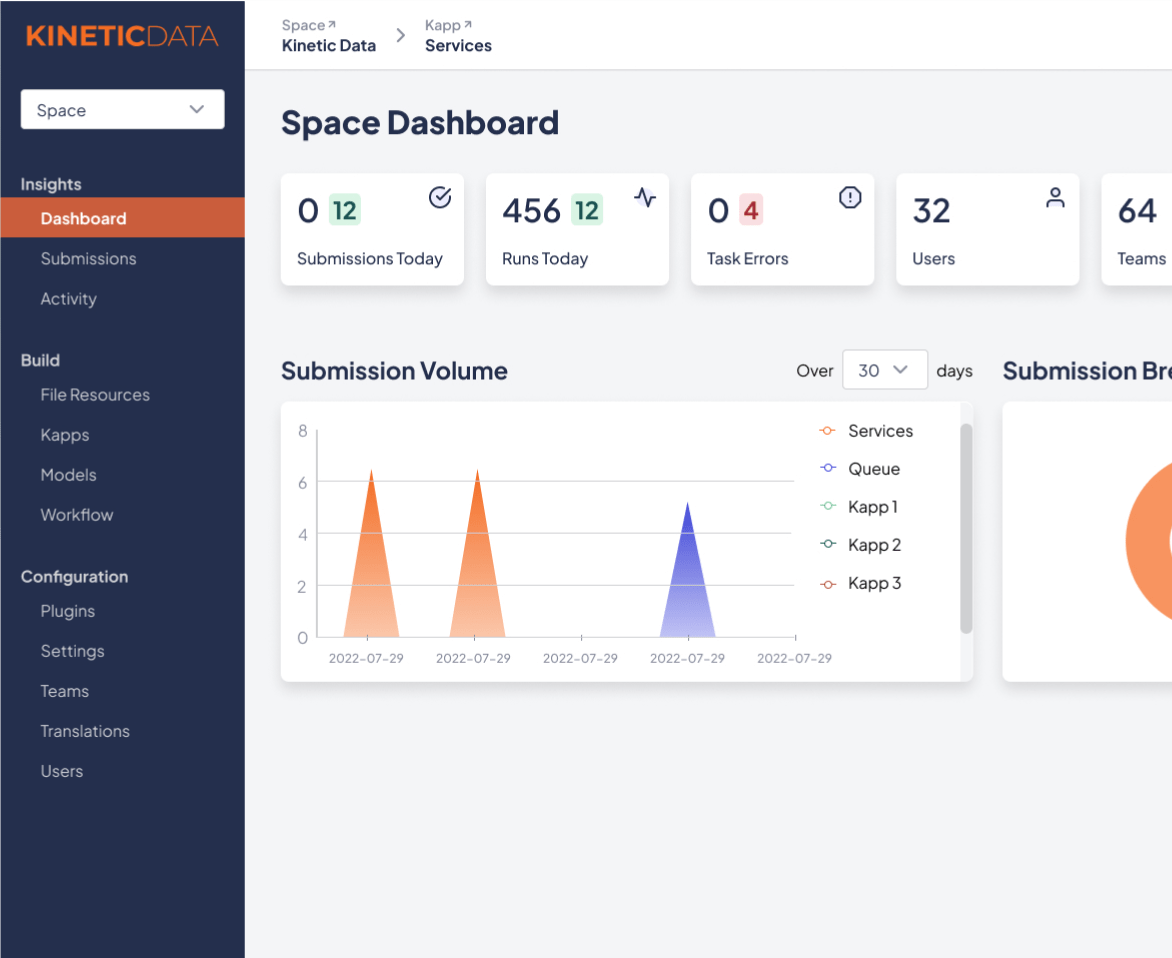Pega promises comprehensive automation—then delivers 18-month implementations and interfaces only consultants love. Kinetic ships working experiences in weeks, not quarters, without the complexity or consultant dependency.
Kinetic vs Pegasystems
Enterprise BPM Reimagined
What is Pegasystems (Pega)?
Pegasystems, commonly known as Pega, is one of the most established enterprise BPM and case management platforms in the market. It's comprehensive, powerful, and deeply entrenched in Fortune 500 companies—especially in financial services, insurance, and healthcare. Pega promises unified automation across customer service, operations, and decisioning with AI-powered workflow optimization.
And to be fair, Pega delivers impressive capabilities once fully implemented. Complex case management scenarios, sophisticated decision engines, omnichannel customer engagement—when you need industrial-strength BPM with every bell and whistle, Pega has built it.
But here's the reality most organizations discover too late: Pega's power comes wrapped in extraordinary complexity. Implementations routinely take 12-18 months with armies of certified consultants. The platform demands specialized Pega developers who command premium rates. UI customization requires deep platform expertise—you're not using React or Angular, you're learning Pega's proprietary frameworks. Changes that should take hours require consultant engagements. User interfaces feel enterprise-heavy because customizing them beyond Pega's patterns is prohibitively difficult.
Organizations choose Pega expecting comprehensive automation. What they get is comprehensive—complexity, consultant dependency, and interfaces that employees tolerate rather than love. Meanwhile, simple workflow modifications require change requests, customization becomes technical debt, and the business waits months for what should be straightforward improvements.
Pega built a powerful platform for the 2000s. But speed, user experience, and business agility matter more now than comprehensive feature checklists.
Kinetic vs Pegasystems
How does the Kinetic platform stack up against Pega?
Implementation Speed
Pega:
12-18 months with certified consultants and professional services
With Kinetic:
30-60 days to first production workflows with minimal services
User Experience Control
Pega:
Proprietary UI framework; customization requires Pega expertise
With Kinetic:
Headless "Own the Glass" architecture—build with React, Angular, Vue
Business User Empowerment
Pega:
Complex authoring tools require training; changes need certified developers
With Kinetic:
Visual workflow builder business users can modify without coding
Consultant Dependency
Pega:
High—platform complexity demands ongoing certified consultant support
With Kinetic:
Low—intuitive tools reduce reliance on specialized experts
Competition
Who are the other platforms in the Enterprise BPM category?
How Kinetic compares: We don't compete on feature comprehensiveness or how many modules we can bundle. We compete on speed to value, user adoption, and business agility. Kinetic delivers BPM outcomes without BPM complexity—orchestration that works, experiences users actually like, and workflows business teams can evolve without calling consultants.
Pegasystems (Pega)
Comprehensive BPM suite with strong case management, but complex implementation and heavy consultant dependency.
Appian
Low-code BPM platform with faster implementation than Pega, but still vendor-controlled UI and seat-based pricing.
IBM Business Automation Workflow
Enterprise-grade BPM with legacy strengths, but heavy platform with slow implementation cycles.
Stop managing consultants. Start shipping workflows users love.
